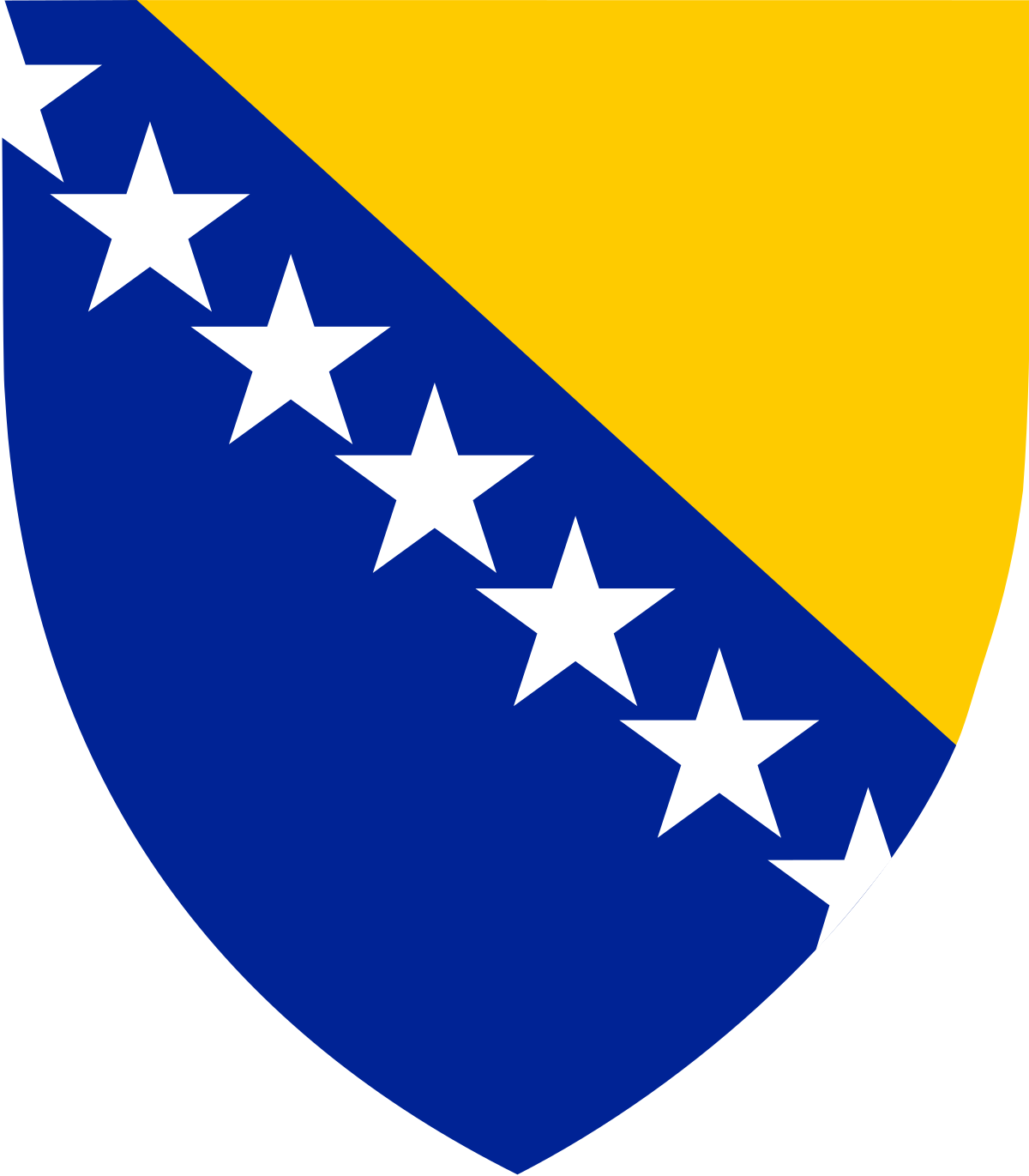Tourism in BiH
Identification Card of BiH

Bosnia and Herzegovina is a country in Southeastern Europe located within the Balkan Peninsula and is bordered on the north, west and southwest by the Republic of Croatia, on the east by the Republic of Serbia and on the southeast by Montenegro. It has a narrow coast to the Adriatic Sea.
Probably the most distinctive feature among them all is astonishing beauty of Bosnia and Herzegovina with its vast array of natural landscapes, cultures, tradition and exceptionally hospitable people.
Total area of the country is 51,197 km2 and the border is 1,543 km long. Total population is a bit less than 4 million inhabitants. The capital is Sarajevo. Currency is convertible mark (KM); 1 EUR=1.95 KM.
Bosnia and Herzegovina has always been a meeting place of many civilizations and cultures and the territory of present-day Bosnia and Herzegovina was inhabited since the Neolithic age.
Population of BiH is of Slavic origin. Slavic tribes arrived to the Balkan Peninsula in the 6th century. Indigenous Illyrian tribes blended into Slavic ethnic mass but the Illyrians left significant traces in cultural heritage of Bosnia and Herzegovina.
In terms of culture, Bosnia and Herzegovina is a jewel of diversity and multiculturalism, the juncture where East meets and intertwines with West. In this unique European country, especially in its old cities, more often than not you will find mosques and synagogues, catholic and orthodox churches in the same street.
Archeological examinations confirm that organized tribal communities lived in this area more than 12, 000 years ago.
Various spiritual and cultural customs were foundations for development of Bosnia and Herzegovina as one of the countries with the greatest natural and cultural diversity in Europe.
Through generations, influenced by Illyrian, Roman, Byzantine, Ottoman and Western European influences, inhabitants of Bosnia and Herzegovina preserved the pride of various ethnic origins that are currently characteristic for this country. There are numerous anthropological and historic evidence for this: common language, common origins, similar folklore and centuries of shared harmonious life.
Destinations
Not so many people are familiar with all splendors of Bosnia and Herzegovina, its intact nature as well as numerous rivers and springs. A unique geographical location exposes BiH to warm Mediterranean climate on the south and fresh continental influences from the north that result in diverse flora and fauna, another unique feature of this country.
Kravica Waterfalls

Kravica waterfall is a large tufa cascade on the Trebižat River, in the karstic heartland of Herzegovina in Bosnia and Herzegovina. It is 10 kilometres (6 mi) south of Ljubuški and 40 kilometres (25 mi) south of Mostar. Its height is about 25 metres (80 ft) and the radius of the lake in the base of the waterfall is 120 metres (390 ft). Kravica is a popular swimming and picnic area and, during the summer, it is frequently visited by tourists from Mostar, Medjugorje and Dubrovnik.
Kastel Fortress in Banjaluka

Mountainous areas of Bosnia and Herzegovina offer perfect conditions for development of winter tourism while access to the Adriatic coast provides opportunity to enjoy during summer season.
Town of Neum
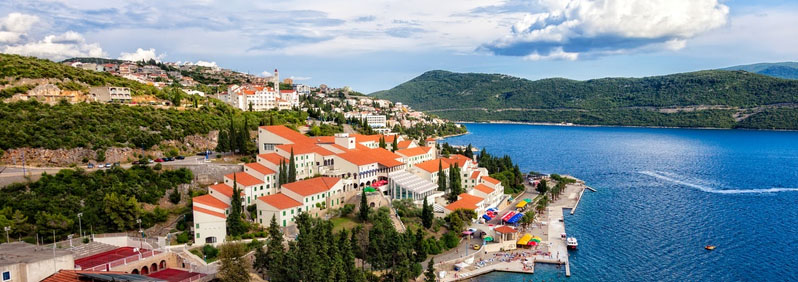
Nevertheless, already mentioned location of the country offers even more possibilities to enjoy ecotourism, wellness and cultural tourism, visits to numerous national parks, enjoying rural tourism and gastronomic offer, water rafting on some among many clean and emerald-green rivers, visiting the Adriatic coast, enjoying local wine along well-known Herzegovina Wine Route, pilgrimage to Medjugorje, visiting some of necropolis with stećci (medieval tombstones), attending movie screenings at the world-renown Sarajevo Film Festival or exploring some of the cities in BiH.
Stećci are old tombstones with various ancient inscriptions, symbols, epitaphs and verses about life, love, country, family, the Sun, the Moon, tribal warriors, dance and praising gods. These types of medieval tombstones are specific for this region. Many of these stećci are dating back to more than 800 years and preserve a precious part from the ancient past of Bosnia and Herzegovina. They cannot be found in other parts of the world because they are remnants of BiHžs history and a national symbol, the expression of culture and art that has survived and developed over the centuries. Stećci are monuments inscribed at the UNESCO World Heritage List.
Jahorina and Bjelašnica are two mountains in BiH where the 1984 Winter Olympic Games were held. Currently, these mountains are hosts to the best and most affordable skiing in all of Europe. We invite everyone to try skiing on those slopes and enjoy this magnificent mountain ambiance.
Mountainous terrain in BiH provides ideal conditions for sustainable tourism. Mountaineering and hiking, especially in mountain areas, and visiting some among many charming and remote villages represents a magical journey for beginners and professionals. Biking is also very popular as well as fishing, rafting, bird watching or wild herb picking.
Bosnia and Herzegovina has two more monuments inscribed at the UNESCO World Heritage List – Old Bridge in Mostar and the Bridge in Višegrad.
Useful information
Tourism Association of the Federation of Bosnia and Herzegovina – http://www.kfbih.com/tourism-association
Tourist Association of the Republic of Srpska - http://turizamrs.org/
More information on: http://www.bhtourism.ba
Important telephone numbers:
Information Center 121
Police 122
Fire Department 123
Ambulance 124
Virtual Bosnia and Herzegovina
https://www.youtube.com/watch?v=v50wJao-RC4
Baščaršija 
Oriental Bazaar in the heart of capital Sarajevo
Baščaršija is the main tourist attraction of Sarajevo. Located in the very heart of the city, this bazaar is one of Sarajevo’s oldest wards as well as a well-preserved example of oriental architecture in the Balkans.
Stećak
Being the crossroads of many civilizations, Bosnia and Herzegovina is rich with archaeological remains, from the Neolithic, Roman, Illyrian and Medieval periods. The most specific and well known (stećak) are the hand-carved tombstones that date back over 700 years to the Middle Ages.
These unique monuments of ancient native artistic tradition, which are scattered all around Bosnia and Herzegovina, have become almost a national symbol. In addition, there are numerous remains of medieval towns and castles from same period.
Mostar Old Bridge
in the Old Town in the very centre of Mostar, was built in 1566, by the Ottoman architect, Mimar Hajrudin, who erected this stone bridge in what was then just a small Turkish outpost in southern Bosnia and Herzegovina. The bridge spans the emerald green waters of the Neretva River and came to be known as "Stari Most", or Old Bridge. The outpost grew into a city and was eventually named after the bridge - Mostar, or "keeper of the bridge." Today, this bridge is included in the UNESCO World Heritage List. (Read more on: https://en.unesco.org/)
Počitelj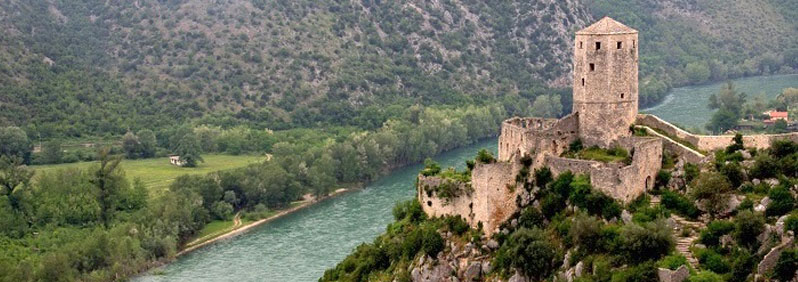
is a unique settlement, listed as a potential UNESCO heritage site. The Hadi-Alija Mosque has been reconstructed as well as the Šišman-Ibrahimpašina medresa and the Gavran Kapetanovi house, all of which are open to visitors. The most striking object in Počitelj is the Sahat-kula, a silo-shaped fort that towers from the top of the hill above the town. It housed watchmen and military to guard against possible invasion from the Neretva Valley. Besides its stunning oriental architecture and Ottoman feel, Poitelj hosts the longest operating art colony in South Eastern Europe.
(Read more on: http://www.bhtourism.ba/eng/)
National park Hutovo Blato
an oasis of peace, is situated in southern Herzegovina and is a protected zone and important bird reserve. This unique sub-Mediterranean swamp of superb beauty and importance accommodates birdwatchers, nature lovers and families with children alike.
(Read more on: http://www.bhtourism.ba/eng/)
Međugorje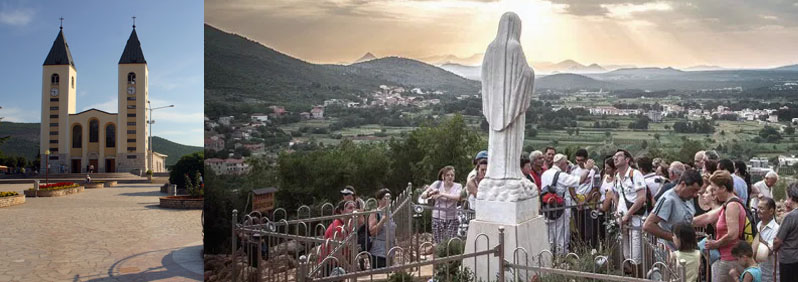
is located in the mountains near Mostar. The small town is incredibly popular with Catholic pilgrims - millions of pilgrims have visited the site since 1981, when a small group of young people in the village began reporting seeing visions of the Virgin Mary on a nearby hillside.
(Read more on: http://www.medjugorje.hr/)
Perućica
in Sutjeska National Park, is one of only two remaining mediaeval forests in Europe. It is often described as an ancient outdoor museum with a magical forest of beautiful 50-meter high spruce and beech, 200 to 300 year old, trees. The forest is a true gem in terms of wildlife and the large number of endemic plants. (Read more on: https://greenvisions.ba/en)
Blagaj Buna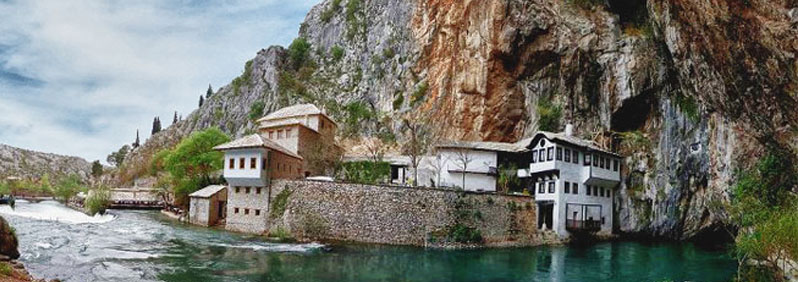
is one of the finest examples of an underground karst river. It flows out of a 200 m cliff wall to become the Buna River. Unsurprisingly, the Ottoman sultan was impressed, and ordered a tekija to be built right next to it. This 16th century house/monastery was built for the Dervish cults and is still one of the most mystical places in all of Bosnia and Herzegovina.
(Read more on: http://www.bhtourism.ba/eng/)
Rakitnica River Canyon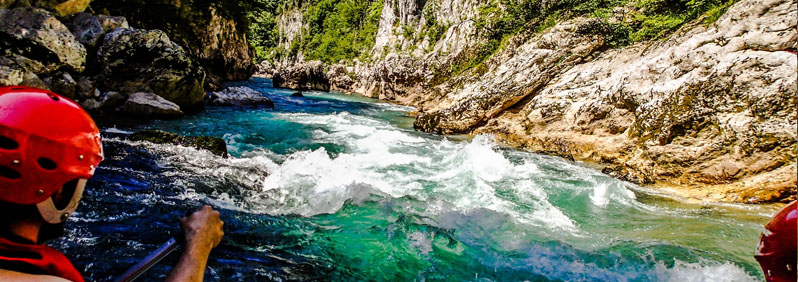
is one of the deepest and most profound gorges in Europe. It is a natural wonderland. The entire length of the canyon is lined with endemic types of flora and fauna. Bears, wolves, wild boar, pine martins, and wild goats all take refuge in this difficult to access canyon. As many as 32 endemic plants, flowers, and trees can be found in this tiny region of the Dinaric Alps. The crystal clear water, fed by the high mountains above, is potable width=100% for the whole length of the canyon region.
(Read more on: http://www.bhtourism.ba/eng/)
Vjetrenica Caves
near the small town of Ravno and the medieval orthodox monastery of Zavala is the largest cave system discovered in Bosnia and Herzegovina. This extensive cave system has over 6 kilometres of channels, and the stunning main channel stretches over 2.5 kilometres.Amongst the many archeological discoveries are the ancient cave drawings of bears and leopards that are estimated to be over 10,000 years old. The many small lakes in the caves are home to endemic types of shellfish only found in deep underground aquifer systems.
(Read more on: http://www.bhtourism.ba/eng/)
Archaeological excavations
began recently near Sarajevo in the Visoko Valley at what some believe to be a newly discovered pyramid complex, the first such monumental ancient structures found in Europe. In 2005, Semir Osmanagić put forward his theory that a 100-meter geometrically-shaped hill with evenly shaped sides and corners that point north, south, east and west is an ancient man-made structure.
(Read more on: http://piramidasunca.ba/bs/)
Fascinating Facts about Bosnia and Herzegovina and its People
Bosnia and Herzegovina has a great tradition of success in various fields of science, art, literature, technology, etc. It is also blessed with natural beauties rarely seen anywhere else.
Ivo Andrić
received in 1961 the Nobel Prize in literature for the book The Bridge on the Drina, where the author describes the life of this region in which East and West have for centuries clashed with their interests and influences, a region whose population is composed of different nationalities and religions.
(Read more on: https://www.nobelprize.org/)
Vladimir Prelog
received in 1975 the Nobel Prize in chemistry for his work in the field of natural compounds and stereochemistry of organic molecules and reactions.
(Read more on: https://www.nobelprize.org/)
Sarajevo
hosted in 1984 the Winter Olympic Games. These Games marked the only time a socialist country has hosted the Winter Olympics.Organizers took full advantage of the opportunity and constructed state-of-the-art sports facilities.
(Read more on: https://www.sarajevo.ba/)
Danis Tanović
won in 2002 the Oscar award for the best foreign film, No Man’s Land. This Bosnian writer and director became a celebrity in the international film community practically overnight with the release of his drama about the war in Bosnia and Herzegovina. No Man's Land is one of the most highly awarded films in the history of Bosnian cinematography. Numerous awards, 42 in all, include the Golden Globe and an Oscar.
(Read more on: https://oscar.go.com/)
Sarajevo Film festival
has become the largest and the most important event for film professionals and film lovers in this part of Europe. Many film celebrities visit Sarajevo during the Festival, enriching with their presence the Festival programs and contributing to its atmosphere, such as: Bono Vox, Danis Tanovi, Steve Buscemi, Vanessa Redgrave, Willem Dafoe, Mike Leigh, Gerard Depardieu, John Malkovich, Nick Nolte, etc.
(Read more on: https://www.sff.ba/)
Irfan Skiljan
created in 1996 the first version of IrfanView, one of the most popular viewers worldwide.It is a very fast, small, compact and innovative FREEWARE (for non-commercial use) graphic viewer for Windows 9x/ME/NT/2000/XP/2003. IrfanView was the first Windows graphic viewer worldwide with Multiple (animated) GIF support, one of the first with Multipage TIF support and the first with Multiple ICO support.
(Read more on: https://www.irfanview.com/)
Trams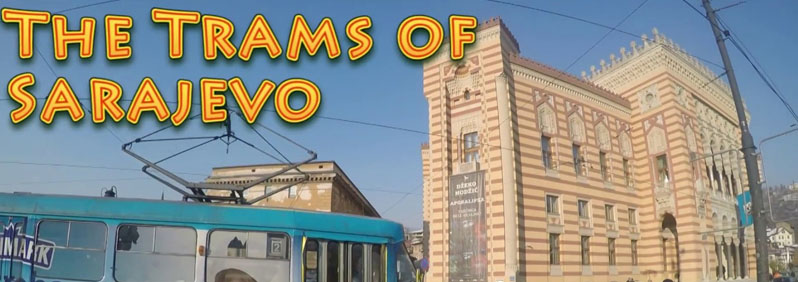
were first regularly used in Europe in Sarajevo, starting in 1885. These streetcars were an animal railway, usually using horses and sometimes mules to haul the cars, usually two as a team.
Grbavica
a movie by Jasmila Žbanić, won the most important prize at the 2006 Berlinale, the Golden Bear. This award belongs to the most respected awards in the world of film, given the fact that the Berlin International Film Festival, which hosts more than 16,000 film professionals from about 80 countries every year, is one of the most important dates on the international film industry’s calendar.
(Read more on: https://www.berlinale.de/en/home.html)
